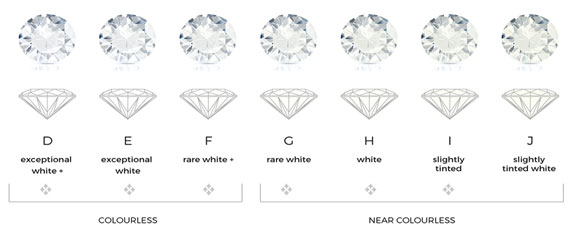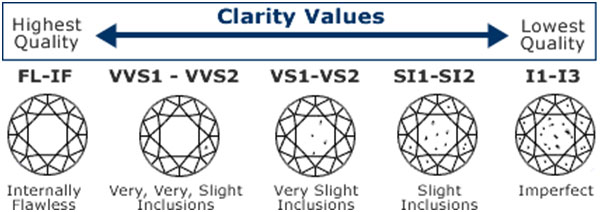LOGIN NOW
Welcome back to Sirius Jewels

Register Now
Welcome back to Sirius Jewels

And Get 1000rs as Sirius Stars!

The 4 Cs are a diamond's primary visual characteristics. Carat, Cut, Color, and Clarity are some of them. These four properties are scored and classed to determine the diamond's size and quality. They also aid in distinguishing between identical diamonds as well as determining the diamond's worth and value. The Gemological Institute of America, or GIA, devised the grading scales for the 4 C's. Consumers and gemmologists can reliably recognize diamonds thanks to established grading scale methods. Once you've mastered the 4 Cs, you'll be able to pick a diamond that fits within your price range while also maximizing the quality and size criteria. This page will successfully instruct you on the fundamentals so you know what to look for and how to assess a diamond's quality and worth.
The weight of a diamond is measured in carats, which represents the diamond's size. The rarer and more costly a diamond is, the bigger it is. The most apparent C is the carat. A 1.00 carat or ct diamond weighs 0.20 grams and is not to be confused with karat (a measure of gold purity). A diamond's size is measured in centimeters by its length and breadth, or, in other words, its diameter. A single 1.00ct diamond requires around 250 tonnes of rock mining. Diamonds are uncommon and valuable because of this.

The typical millimeter diameters of diamonds in each carat range can be used to estimate their visual size. Although each diamond is unique, these millimeter measures are commonly used, especially since diamonds are now cut with machines to assure precision. Examine the dimensions to get a true sense of the diamond's size. Round diamonds have less depth than fancy-shaped diamonds that are expertly cut (diamonds other than Round).
As the carat weight of a diamond grows, its price rises exponentially rather than linearly. The price of a diamond increase as it reaches a threshold weight. 0.30ct, 0.40ct, 0.50ct, 0.70ct, 0.90ct, 1.00ct, 1.50ct, 2.00ct, 3.00ct, 4.00ct, 5.00ct, and 10.00ct are the essential weights. Diamond cutters will go to great lengths to keep the diamond weight at or above the essential weights.
The average carat weight of a diamond is 0.90ct. Carat is preferred by consumers above the other C's of diamonds since it is the most visible C. Consider the carat on one hand and the other three C's on the other when determining the value of a diamond. As you increase carat, you may need to cut the other C's to match your diamond budget. Conversely, increasing the other C's may necessitate lowering the carat.
Diamonds are cut to optimize a diamond's radiance, fire, brilliance, and overall aesthetic appeal. The cut is a measurement of how well light flows through a diamond. The brilliance of diamonds is due to their ability to reflect light. When light strikes a diamond, it passes through it, bounces about and reflects within it, and then returns light to your sight. That's the glint you're seeing. The quantity of light performance achieved is directly influenced by the diamond's cutting. The diamond sparkle is determined by the angles, positions, sizes, and shapes of the facets.

The greatest hue for a diamond, ironically, is 'colorless.' The colors range from D (colorless) to Z (colorful) (light yellow). To be honest, to the untrained sight, the color variation in diamonds within a color family is fairly modest. They do, however, make a difference in the diamond's price and quality. In the end, colorless diamonds are the most valuable!

Microscopic impurities or flaws develop within the diamond throughout the development process. Diamond inclusions are the name for these flaws. Inclusions are fairly frequent in diamonds, and they are birthmarks that give each diamond its personality. The clarity of a diamond is determined by the total number of inclusions. Gemmologists rate the clarity of gemstones on a scale. The clarity of diamonds ranges from FL to I3. At a magnification of 10x, inclusions are studied. For additional information, see our Diamond Color Guide.

Clarity is the third most crucial attribute to consider when examining the 4Cs because most flaws cannot be recognized unless magnified at least 10 times. (The most essential 4C to consider is cut.) Consider an SI-grade diamond to optimize your budget, but keep in mind that it may contain very few imperfections apparent to the human eye if the stone is inspected extremely closely.